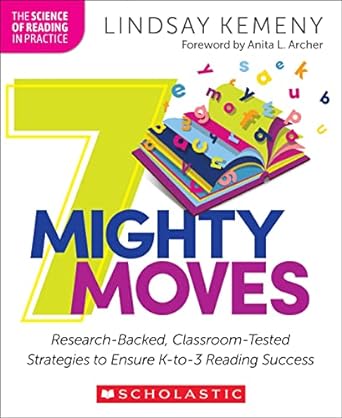2018 School Spending Survey Report
7 Mighty Moves: Research-Backed, Classroom-Tested Strategies to Ensure K-to-3 Reading Success
Scholastic Professional.
Jul. 2023.
160p.
pap. $35.99. ISBN 9781339012087.
COPY ISBN
VERDICT This book offers a variety of helpful and practical strategies that are easily implemented in any K–3 classroom, and will help all students to learn to read more effectively and with higher levels of fluency and comprehension.
RELATED
ALREADY A SUBSCRIBER? LOG IN
We are currently offering this content for free. Sign up now to activate your personal profile, where you can save articles for future viewing





Be the first reader to comment.
Comment Policy:
Comment should not be empty !!!